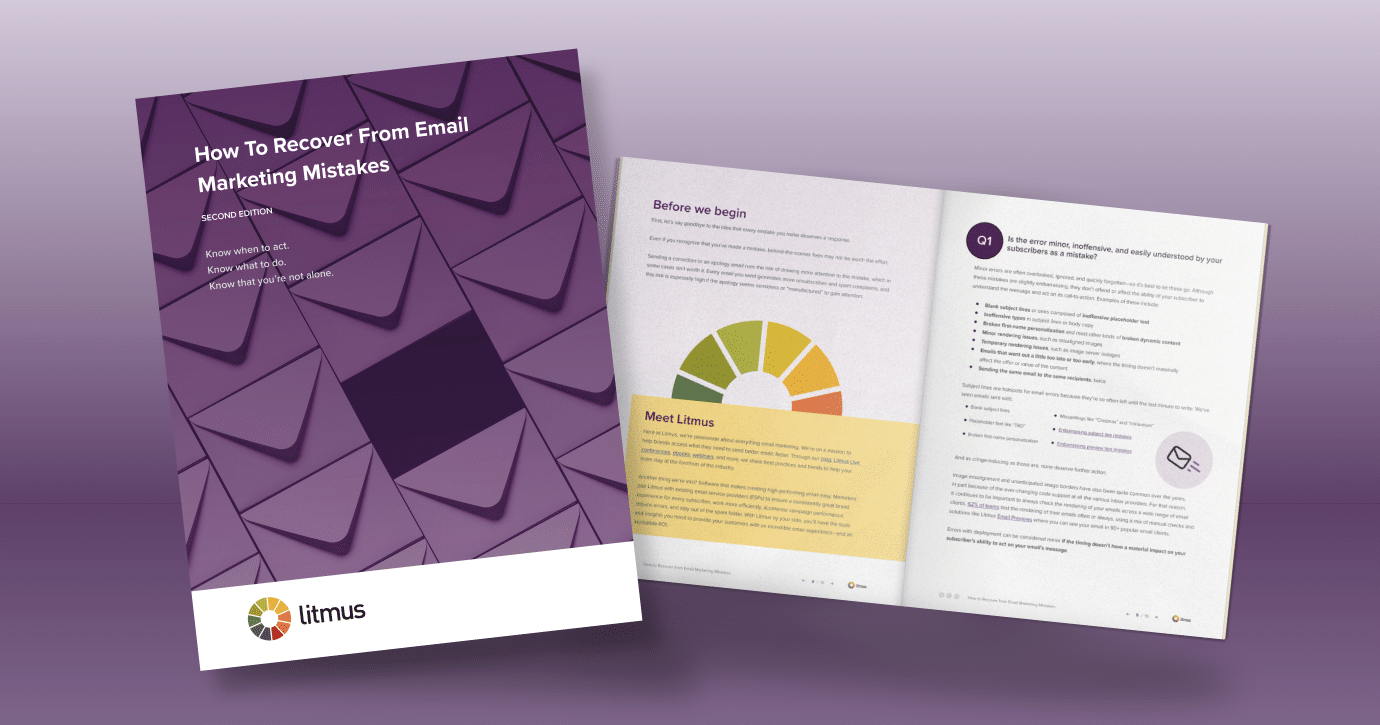How to Recover from an Email Personalization Mistake
Email personalization is powerful. That’s not a surprise to anyone. Customers want to feel valued and understood. What better way to accomplish that than by sending curated messages to the inbox with each specific reader in mind?
However, mistakes happen to the best of us—brands big and small. But like most problems, how you recover is what people remember. The last thing a brand wants to do is create negative attention and send unsubscribe rates on an upward trajectory.
We have outlined some common email personalization mistakes to watch out for, and ways to turn errors into opportunities.
The dreaded first name fail
Addressing customers by their first name immediately builds a connection. It resonates immediately. One study suggests that first name personalization increases unique open rates by 29% and unique click-through rates by 41%.
A subscriber receiving an email addressed to the wrong name can be awkward, and/or creates distance and distrust. However if marketers catch the mistake before the subscriber notices, it’s better to be transparent and address the error. Keep follow-up communication concise and human to show sincerity and customers will be more forgiving. After all, we all mess up sometimes.
To avoid future mishaps, include fallback text such as “friend,” “valued customer,” or our favorite, “email geek.” This still gives a personalized feel that pertains to your brand and makes email feel custom.
Right message, wrong location
Customers who receive a great offer only to find out it doesn’t apply to their location can be a disappointment they won’t soon forget.
The best way to respond? Address the error and direct customers to offers and promotions that are relevant to their area. Or, give a specific timeline when they can expect an email with special offers for their store of choice, and link directly to a weekly ad or other exciting brand information. This allows brands to own the mistake and deliver some good news all at once.
Having a pre-send checklist can help catch any mistakes before they become a problem. Checking every campaign before it’s sent, lowers the likelihood of a negative impact on brand reputation.
Addressing the wrong segment
Customer segmentation helps marketers reach a group of subscribers with similar interests in a single campaign. It’s an effective way of customizing communication and increasing engagement and revenue.
Sending an email to the wrong segment can potentially confuse or upset subscribers, depending on the nature of the content. The best way to fix the situation is to own the mistake with a sincere apology email. It’s important to make responses personal and try to make things right.
On the flip side, this mishap gives brands the opportunity to re-engage with subscribers, and is a great opportunity to encourage preference center updates to avoid future mistakes. Having clean and accurate data helps marketers and makes subscribers feel valued.
Poor timing
Marketers love to plan in advance but occasionally this can backfire. Sending a pre-scheduled email campaign that conflicts with the timing of a major news event or makes personalized travel suggestions for places experiencing devastating weather can make brands look insensitive and out of touch.
Empathy is the best approach in these situations. This is a chance to own the mistake and put the subscriber’s needs or concerns first. People feel valued when they feel heard and appreciated, and this will help minimize any brand reputation damage.
Personalization without accessibility
Email personalization doesn’t stop at custom product suggestions. It’s up to brands to be sure every email recipient is able to read and engage with the content regardless of any physical, visual, or cognitive disabilities. Failing to test for email accessibility will alienate some customers and could cause them to unsubscribe.
The best way to recover from forgetting ALT image descriptions, using color combinations that are not easily read, or failing to optimize emails for screen readers is to be aware of the mistake and do better next time. Implementing an accessibility checklist will improve the subscriber experience and ensure everyone feels included.
Email subscribers expect personalization, but mistakes happen to even the most seasoned marketers. How brands respond demonstrates they are owning the mistake and care about the subscriber experience.

| Recover from email marketing mistakes Mistakes happen. Learn how to turn panic into productivity and recover with grace and ease. |

Maria Coleman
Maria Coleman was a Senior Content Marketing Manager at Litmus
